Many friends often question me, what’s there in a fire temple? Why are we non-parsis not allowed inside? Everyone is allowed in other temples, but are others not allowed in a fire temple? You might find the answer as you walk through.
We Zoroastrians as introduced by our Priest (Dastoorji as we call them) Nairyosang Dhawal at the time of arrival in India:
“Who thrice a day praise the sun and five elements – fire, wind, earth, sky and water, by Nyaishna prayers, who believe in the existence of three worlds, and who adore the very merciful Ahure Mazda and the Almighty – those are the Parsis – noble-born, bold, valiant and strong.”
Light or its physical manifestation, Fire, is intrinsic to our Zoroastrian faiths. Lord Ahura Mazda, our holy lord, is eternal Light – his very nature is Light.
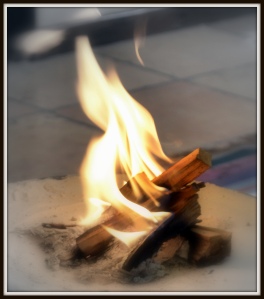
Fire, in one form or the other is an important part of the religious life of man, and in almost all the religions of the world. For us, Fire is “the Son of Ahura Mazda”. While offering prayers during day or night, a Zoroastrian faces some sort of light which signifies the presence of the Lord.
The huge carved structures, attractive statues, different kinds of art works, the man selling sandalwood at the gate, etc. are indeed fascinating to watch for a traveler passing by a Fire Temple. Inside the fire temple there are no works of art or any attractive statues. The environment changes inside and feels peaceful and pure.
The outer view of a fire temple is a Masterpiece to adore. It usually consists of gardens with beautiful flowers and trees; fountains and some marvelous structures. A few fire temples have a structure which might look weird to any non-parsi passer-by, which is, a Human headed bull with wings (a religious sculpture, shown in Figure below). Known as Gayomard, this sculpture reveals the body of a bull, the face of a human being and the wings of a supernatural being.
Members of other communities are allowed to pay respect from outside the temple. Only Zoroastrians are allowed into the temple premises. Even the Zoroastrians are bound to different restrictions inside a temple. They can only enter the temple after purifying self by performing the Kusti (a spiritual girdle). The term Kusti means to draw talismanic circuits around the waist on the Sudreh (a holy garment). The Sudreh and Kusti are first time given to a Parsi child once he starts to mature and gets proper senses at around the age of 7. The ceremony performed for the same is known as the Navjote Ceremony (shown in Figure below).
Before performing the Kusti one needs to wash hands and face with water which is available at the Panihari. Only after performing the Kusti is one allowed to enter the main temple passing from the Veranda (the Corridor). The main temple from inside consist of a hall.
The hall consist of a Prayer Room and Sanctum Sanctorum (known as a Kebla) where in none but a priest with the power of Bareshnum is allowed. Bareshnum is a purity bath that a priest has to undergo before he can get the right to get into the Sanctum Sanctorum.
The Sanctum consists of the Sacred Fire on the Afarganyu (similar to an Altar), which is surrounded with a furrow (known as a Pavi) to maintain its divine power. All the Zoroastrians pay homage to the Fire. Once the fire is installed in the temple, it must always be kept burning. Small pieces of ‘babul’ tree known as Kathi are kept placed on the sides for burning. Devotees even offer sandalwood. The duty of the Priest is to keep the Sacred Fire burning round the clock. There are rituals to be performed five times a day by the priest which is known as the Boi ceremony. This is done in the five periods of a day viz the sunrise to noon (known as Havan), noon to three o’clock (known as Rapithwin), three o’clock to sunset (known as Uzirin), sunset to midnight (known as Aiwisruthrem) and midnight to sunrise (known as Ushahin).
The Boi ceremony is done by placing six long pieces of sandalwood upon one another in pairs which is symbolizes a throne. This is known as a Machi. The Priest is supposed to purify the khuvan (the stone base of the Afarganyu) by washing it with water. Then by going round in eight different directions and chanting short prayers (which is known as the chak farvun), which signifies that he is paying respect with praise to the holy Fire. Then there is ringing of bells, signifying the driving away of evil thoughts, words and deeds to which the entire community bows. Then the priest starts residing the prayers in the Kebla which are known as the Niyash.
The figure shows the internal plan of the Fire Temple. (Source: Hindustan Times. Click to enlarge).
Fire temples also have a place known as the Urvis Gah to perform inner rituals where in none but the priest performing the ritual is allowed to step. It is accompanied by a small fire known as the Dadgah Fire. Zoroastrians worship natural elements as mentioned above, thus every fire temple also has a Well for worship. Some Fire temples also have a sacred bull called as Varasyaji.
This was a short walk through the Fire Temple. There are different kinds of Fire Temples based on the grade of Fire installed.
There are three grades of Fire in Zoroastrian religion. The highest grade is known as the Atash-Behram and the fire-temple is also known by the same name. It has a very royal status and is dedicated to Behram, the angel of Victory. The establishment of an Atash-Behram is done by collecting 16 professional fires from different types of tradesmen and functionaries. Each of these fires is purified by many rituals. The most important fire among these required is that of a natural kind, and sometimes they have to wait for its occurrence. It is collected from burning of woods/grass due to lightening. The union of the 16 fires is done and the royal fire is established. Presently there are 8 Atash-Behrams in India and 1 in Iran. 1 in Udvada, 1 in Navsari, 2 in Surat, 4 in Mumbai and 1 in Yazd, Iran. Figure shows the 9 Atash-Behrams (Click to enlarge).
The second grade of the fire is known as the Adaran and the respective fire-temple is known as the Adaryan in an Agiyari. This is dedicated to the protector of fire (Adar Yazad) and the giver of justice (Meher Yazad). This fire is collected form four sources (priest, warrior, farmer and artisan), purified and united. It symbolizes equality. Adaryans are innumerable in number. The figure shows two Agiyaris in Mumbai.
The third grade of the fire is known as the Dadgah. This is the common household fire used to the latent spark in the person for purity of house or the street. It is ignited using dry babul wood or sandalwood.
This was a small tour of our Atash-Behrams and Agiyaris…….
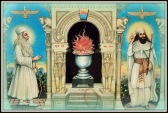 “True happiness is delivered from happiness unto others” – Zarathustra.
“True happiness is delivered from happiness unto others” – Zarathustra.
_____________________
References: Parsika volume 1 by Noshir Daboo, Deen Parast (November 1998), Zoroastrian Heritage by K. E. Eduljee.
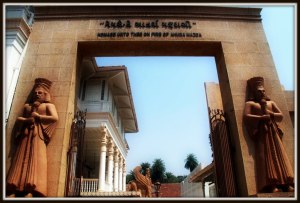
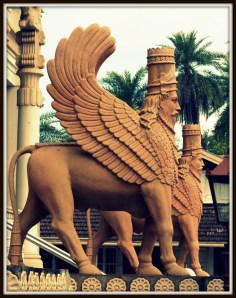
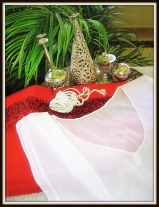
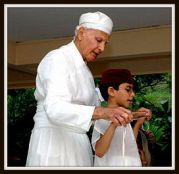
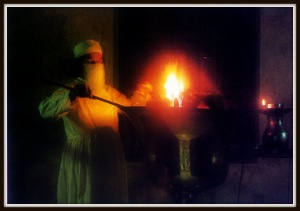
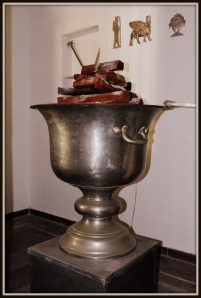
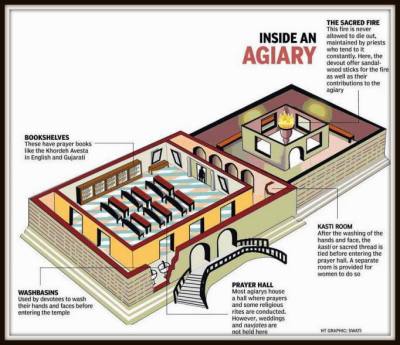
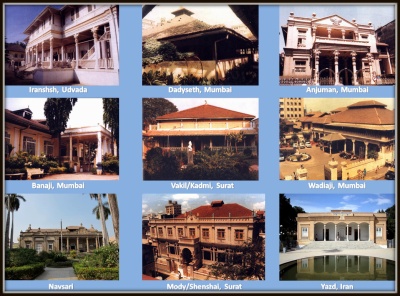
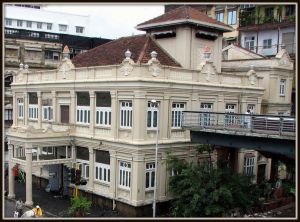
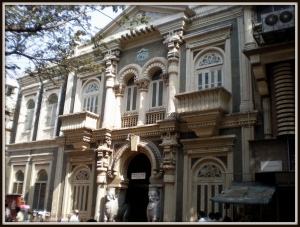
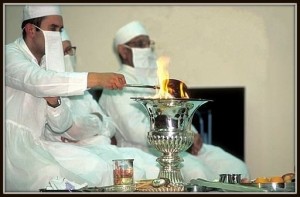
Thanks..this helped a lot…I was really fascinated by the Parsi temples and was extremely curious to know about them…